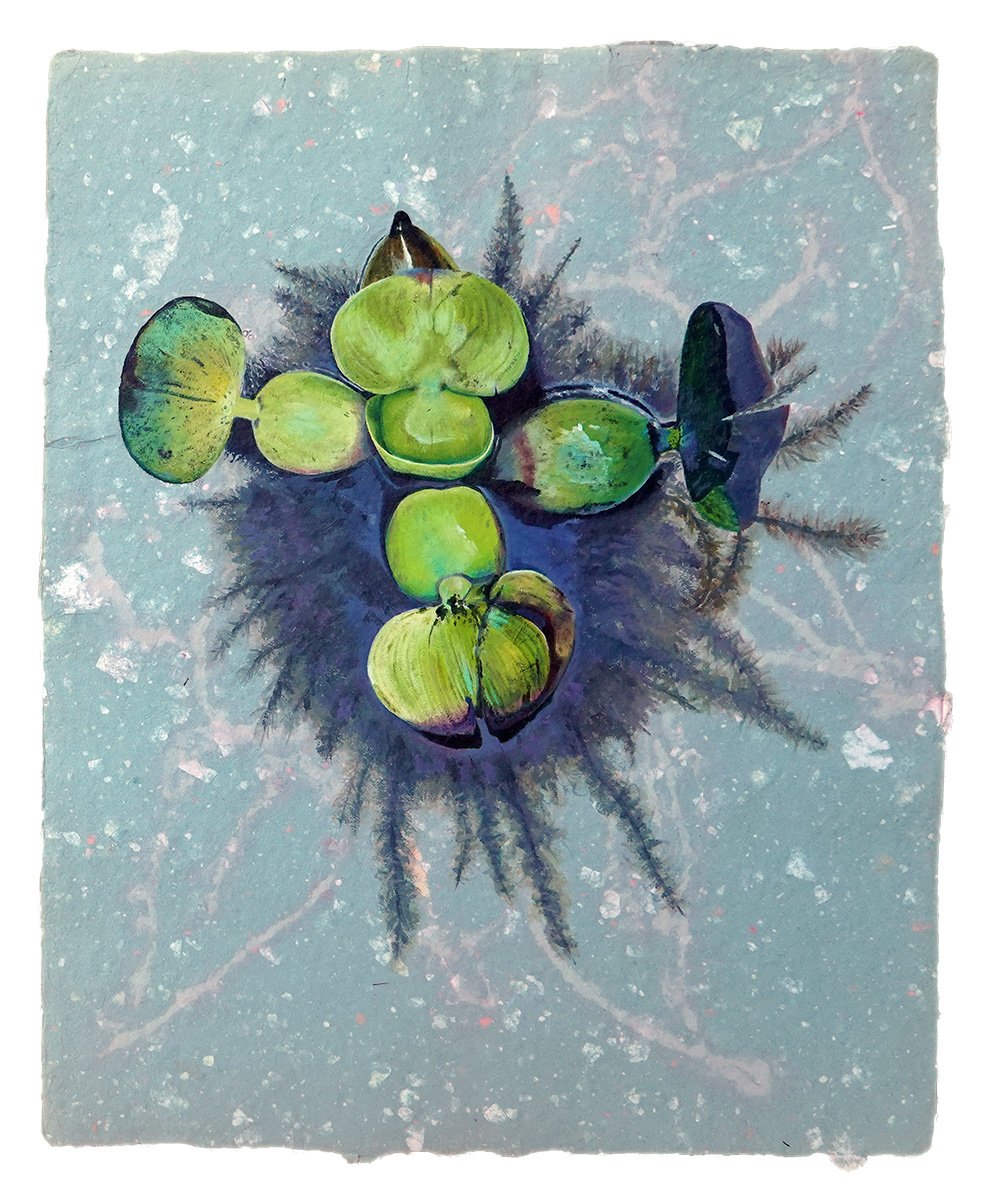There’s a word in Japanese that doesn’t quite have a satisfying translation to English: 新緑 (shinryoku). It’s the new, lush green of early summer. One of the plants that always captures that feeling for me is the ginkgo tree (Ginkgo biloba). I wanted to capture 新緑 in a painting of ginkgo leaves.
In researching possible titles for this painting, I learned that the ginkgo tree holds particular significance in Japan as one of the “survivor trees” that survived the atomic bombing of Hiroshima. I watched a short documentary on the man who has dedicated himself to caring for these trees and the trees themselves here. I highly recommend watching it; it is a moving story.
I also was inspired by haiku about shinryoku and related concepts like wakaba and midorisasu, like this poem from the poet Teruko from the Rainier Haiku Ginsha: “は一色ならず色重ね (shinryoku wa hitoiro narazu irokasane) / fresh green is not one color but layered hues.”
This is Even the Shadows Are Fresh (新緑), acrylic on round wooden panel, 12x12x.875”, 2025.
As a little bonus, here are a few images I’ve gathered of ginkgo leave motifs around Japan!



